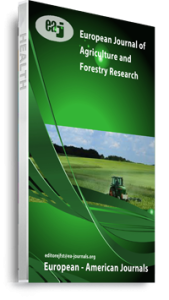The study investigated the effects of three pre-treatment techniques and growing media the dormancy and growth response of baobab seeds. The seeds were immersed in cold water (25-28oC), hot water (100oC), and sulphuric acid (10%, 50% and 98% conc. levels) at different time intervals. The seeds after pre-treatment were sown on three different growth media. Randomized Complete Block Design with 3 treatments and 3 germination media was adopted for this experiment. The result showed that earliest mean days of emergence (8days) was observed in seeds subjected to acid treatment at 98% conc. The highest (17 seeds) rate of germination was recorded in 98% acid conc. soaked for 1h and sowed in sandy soil growth medium with high significant variation. 98% acid conc. recorded the highest germination percentage ranging from 62% – 85%, while other treatments recorded a lower germination percentage (5% to 40%). Sandy soil growth medium showed significant effect in 98% acid treatment soaked for 1hr. The sawdust gave significant germination effect for hot water treatment. Thus, 98% acid concentration soaked for 1h and sowed in sandy soil growth medium was recommended for pretreatment of Adansonia digitata seeds prior to planting to improve germination performance
Keywords: Dormancy, Germination, Growth Media and Adansonia digitata L, Pre-treatment

